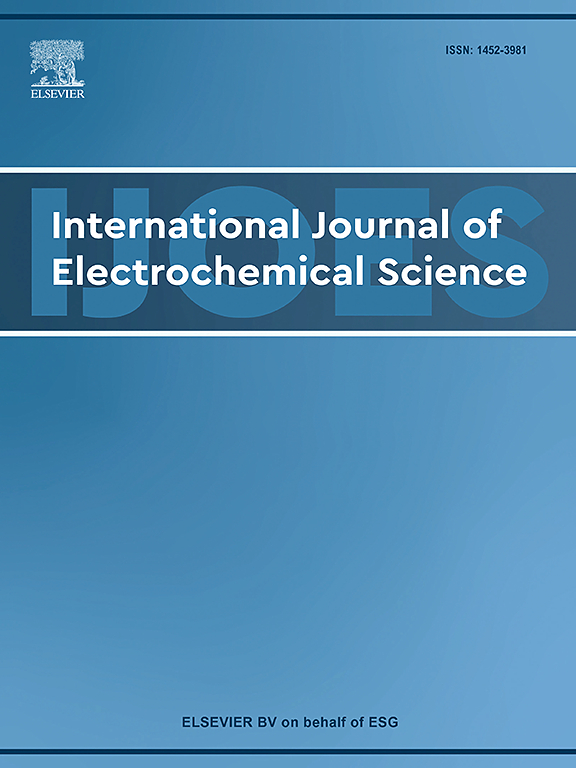回收光伏硅和石墨废料制备锂离子电池用三维硅/人造石墨/碳阳极
IF 2.4
4区 化学
Q4 ELECTROCHEMISTRY
International Journal of Electrochemical Science
Pub Date : 2025-05-16
DOI:10.1016/j.ijoes.2025.101062
引用次数: 0
摘要
硅(Si)晶圆的生产会产生大量微米级、高纯度的硅废料,造成环境污染和资源损失。同样,人造石墨(AG)组件的制造导致产生大量未使用的AG废物。本课题旨在通过回收硅和银的废料,开发具有长循环稳定性的碳(C)包覆硅/银复合材料。最初,纯化的硅废料与无水乙醇结合,在砂磨机中加工,以产生含硅的纳米浆料。接下来,碳纳米管、聚乙烯吡咯烷酮和AG废料被掺入sm -纳米硅中,混合,然后喷雾干燥。最后一步是在氢-氩气氛中进行高温退火,以形成三维互穿Si/AG/C结构。当用作锂离子电池的负极材料时,硬币电池在500次循环后,在500 mA g⁻¹ 的电流密度下保持639 mAh的容量,达到88 %的容量保持率。经静电修饰后,容量可达691.7 mAh g⁻¹ 。该研究强调了回收Si和AG废物以生产高性能Si/C阳极材料的潜力,对废弃资源的可持续再利用做出了重大贡献。本文章由计算机程序翻译,如有差异,请以英文原文为准。
Recycling of photovoltaic silicon and graphite waste to prepare three-dimensional silicon/artificial graphite/carbon anodes for lithium-ion battery
The production of silicon (Si) wafers generates substantial amounts of micron-sized, high-purity Si waste, resulting in environmental pollution and resource loss. Similarly, the manufacturing of artificial graphite (AG) components results in the generation of significant amounts of unused AG waste. This research focuses on the development of a carbon (C) coated Si/AG composite material with long cycle stability by recycling Si and AG waste. Initially, purified Si waste is combined with anhydrous ethanol and processed in a sand mill to create a Si-containing nanoslurry. Next, carbon nanotubes, polyvinylpyrrolidone, and AG waste are incorporated into the SM-nano Si, mixed, and then spray-dried. The final step involves high-temperature annealing in a hydrogen-argon atmosphere to develop a three-dimensional interpenetrating Si/AG/C structure. When used as the anode material in lithium-ion batteries, the coin cell maintains a capacity of 639 mAh g⁻¹ after 500 cycles at a current density of 500 mA g⁻¹ , achieving a capacity retention rate of 88 %. Following additional electrostatic modification, the capacity rises to 691.7 mAh g⁻¹ . This study highlights the potential of recycling Si and AG waste to produce high-performance Si/C anode materials, significantly contributing to the sustainable reuse of discarded resources.
求助全文
通过发布文献求助,成功后即可免费获取论文全文。
去求助
来源期刊
CiteScore
3.00
自引率
20.00%
发文量
714
审稿时长
2.6 months
期刊介绍:
International Journal of Electrochemical Science is a peer-reviewed, open access journal that publishes original research articles, short communications as well as review articles in all areas of electrochemistry: Scope - Theoretical and Computational Electrochemistry - Processes on Electrodes - Electroanalytical Chemistry and Sensor Science - Corrosion - Electrochemical Energy Conversion and Storage - Electrochemical Engineering - Coatings - Electrochemical Synthesis - Bioelectrochemistry - Molecular Electrochemistry

 求助内容:
求助内容: 应助结果提醒方式:
应助结果提醒方式:


